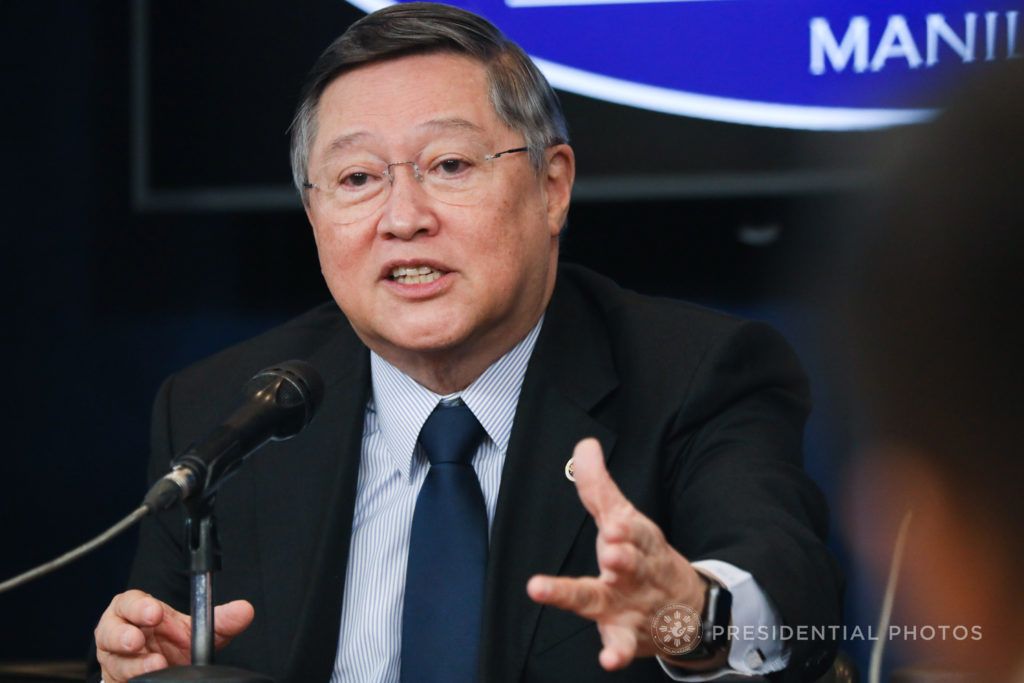
Finance Secretary Carlos Dominguez III. PRESIDENTIAL PHOTO
The head of the Duterte administration’s economic team wants to bring back skilled Filipino construction workers overseas to help in the rollout of the ambitious “Build, Build, Build” infrastructure program.
“I was told that getting skilled workers is getting a little bit tough. I am talking about technicians, welders,” Finance Secretary Carlos G. Dominguez III told reporters recently.
Under its build program, the government plans to roll out 75 “game-changing” projects, with about half targeted to be finished within President Duterte’s term.
The program will entail spending a total of P8.13 trillion on infrastructure until 2022 to usher in “the golden age of infrastructure.”
For Dominguez, the lack of construction workers could be addressed if the government agencies in charge of rolling out infrastructure projects would partner with contractors to hold job fairs abroad targeting overseas Filipino workers.
Higher pay
To lure OFWs back home, Dominguez said the domestic construction industry should dangle higher pay.
Local companies have to understand that skilled workers are acceptable anywhere in the world, and if you want to get skilled workers you have to compete,” Dominguez said.
Dominguez added that the Department of Labor and Employment as well as the Technical Education and Skills Development Authority (TESDA) should also reorient their job skills programs to cater to sectors with high demand, such as construction.
National Economic and Development Authority data showed that the massive infrastructure program is expected to generate an average of 1.063 million jobs each year from 2017 to 2022.
Last month, Neda Undersecretary Rolando G. Tungpalan said the government would break ground for 34 or almost half of the 75 flagship infrastructure projects under the “Build, Build, Build.”
According to Tungpalan, 66 of the 75 flagship projects were estimated to cost a total of P2.289 trillion, based on January estimates.
Bridges
Among the big-ticket projects to be rolled out this year are 12 bridges that will cross the Pasig River and Marikina River as well as Manggahan Floodway.
These bridges to be constructed by the Department of Public Works and Highways (DPWH) starting this year until 2022 would “improve road transport network capacity and efficiency in Metro Manila” as well as “alleviate traffic congestion,” Tungpalan had said.
The DPWH will also roll out the P4.86-billion Panguil Bay Bridge project that will connect Tangub City in Misamis Occidental and Tubod, Lanao del Norte, for completion in 2021.
Railways
The Department of Transportation, meanwhile, will implement the P35.26-billion, 102-kilometer Mindanao Rail Project (Phase 1) that will connect Tagum, Davao City and Digos in Region 11, which is expected to be completed by 2022.
The DOTr will also start this year work on the P211.43-billion Philippine National Railway North 2 project, the 69.5-kilometer extension of the PNR North 1 from Malolos, Bulacan to Clark International Airport and the sprawling Clark Green City, eyed for completion in 2024.
Also for rollout in 2018 is the DOTr’s P175.3-billion PNR South Long-Haul project, a 639-kilometer rail consisting of the following lines: 406-kilometer Los Baños to Legazpi; 117-kilometer Legazpi to Matnog; 58-kilometer Calamba to Batangas; and 58-kilometer Manila to Los Baños.
Tungpalan had said the PNR South Long-Haul railway would be financed by China.

